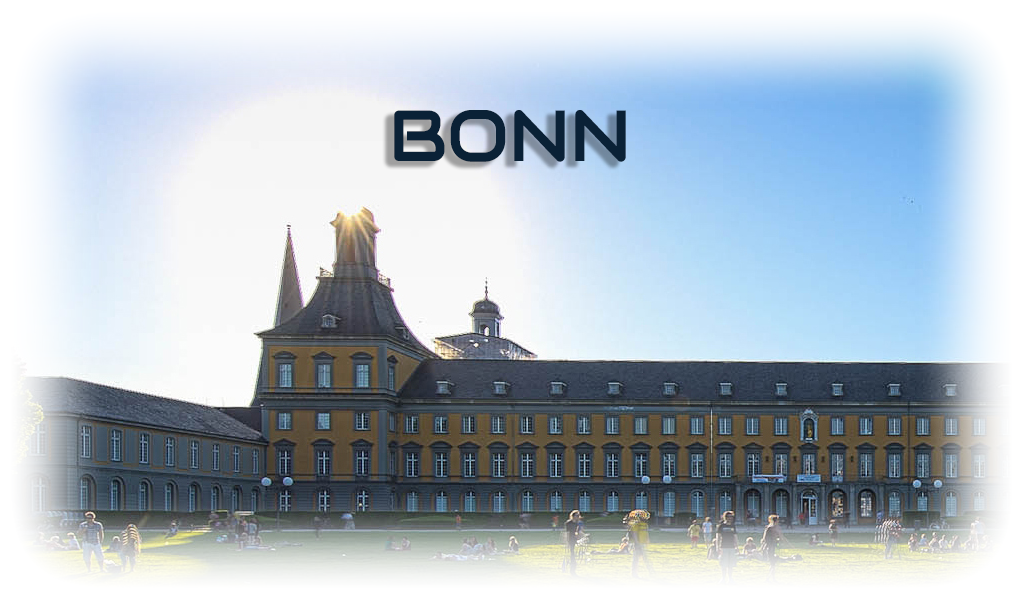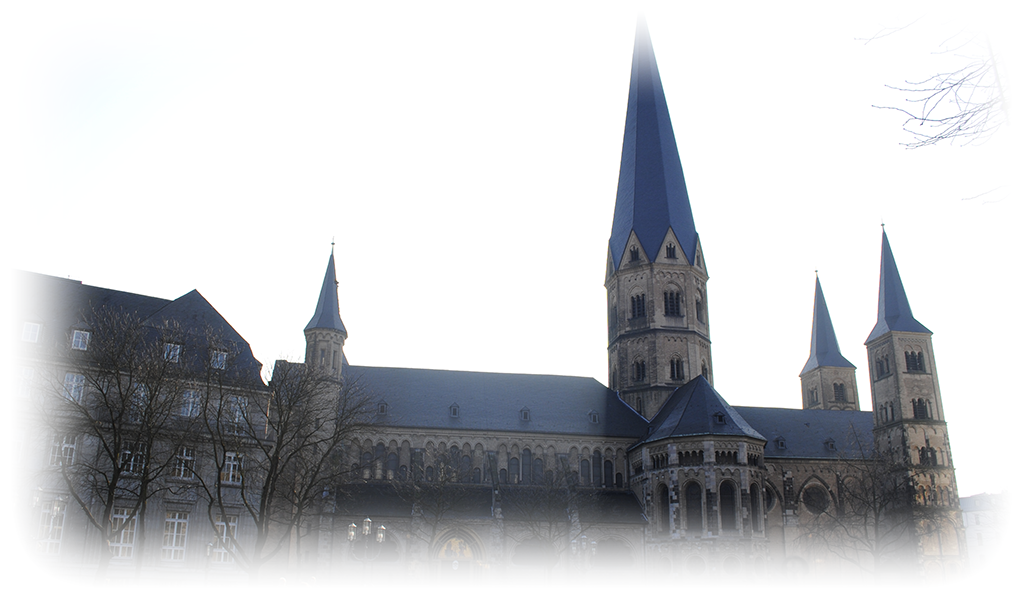
Bonn is a city in Germany on the Rhine as part of the federal state of North Rhine-Westphalia. It is best known as the capital of Germany from 1949 to 1994. Bonn is famous for its magnificent Romanesque cathedral, interesting museums, and an old and very famous university. The city has a rich cultural life filled with many students and is a popular venue for large conferences.
Geography and weather
Bonn is located in western Germany on the Rhine in the southern part of the Ruhr Basin (the region that is the largest agglomeration in the country), 24 km southeast of Cologne. To the south and west, the city borders the Eiffel region, which includes the Rhine Nature Park, and to the north, the Cologne lowlands. Bonn is located on both banks of the Rhine (although most of it is still on the left bank). The city has a temperate maritime climate. Summers here are warm and quite rainy, and winters are mild with rare negative temperatures.
History and interesting facts
Founded in the 1st century AD as a Roman settlement, Bonn is one of the oldest cities in Germany. The date of the city's foundation is considered to be 11 AD. when the Romans built a fortress here Castra Bonnensia. In late antiquity, Bonn was captured by Germanic tribes. The medieval settlement was founded in the early 9th century. In the late 9th century, Bonn was burned several times by the Normans. From the 11th century the modern name began to be used.
At the end of the 13th century Bonn became the residence of the ruler of Cologne. From the 16th to the 18th century, the city was the residence of the Archbishop of Cologne. In 1770 Ludwig van Beethoven was born in Bonn. 16 years later a university was founded here. From 1794 to 1815 the city was occupied by France. From 1815 until the end of World War II, Bonn was part of first Prussia, then Germany.
In 1949 the city was declared the capital of Germany (West Germany). In 1994, Berlin became the capital of a united Germany again. At the same time, Bonn retained the unofficial status of the second capital. There are still several government agencies and ministries.
Geography and weather
Bonn is located in western Germany on the Rhine in the southern part of the Ruhr Basin (the region that is the largest agglomeration in the country), 24 km southeast of Cologne. To the south and west, the city borders the Eiffel region, which includes the Rhine Nature Park, and to the north, the Cologne lowlands. Bonn is located on both banks of the Rhine (although most of it is still on the left bank). The city has a temperate maritime climate. Summers here are warm and quite rainy, and winters are mild with rare negative temperatures.
History and interesting facts
Founded in the 1st century AD as a Roman settlement, Bonn is one of the oldest cities in Germany. The date of the city's foundation is considered to be 11 AD. when the Romans built a fortress here Castra Bonnensia. In late antiquity, Bonn was captured by Germanic tribes. The medieval settlement was founded in the early 9th century. In the late 9th century, Bonn was burned several times by the Normans. From the 11th century the modern name began to be used.
At the end of the 13th century Bonn became the residence of the ruler of Cologne. From the 16th to the 18th century, the city was the residence of the Archbishop of Cologne. In 1770 Ludwig van Beethoven was born in Bonn. 16 years later a university was founded here. From 1794 to 1815 the city was occupied by France. From 1815 until the end of World War II, Bonn was part of first Prussia, then Germany.
In 1949 the city was declared the capital of Germany (West Germany). In 1994, Berlin became the capital of a united Germany again. At the same time, Bonn retained the unofficial status of the second capital. There are still several government agencies and ministries.

How to get there
The nearest international airport is Cologne-Bonn. Also, if necessary, you can use the airports of Dusseldorf and Frankfurt am Main, from where there are direct trains to Bonn (via Cologne).
Attractions
Münster is a significant cathedral, which can be considered one of the most important sacred monuments in Germany. This three-nave basilica was founded in the 11th century and is considered one of the best Romanesque churches on the Rhine. The building is built on ancient Roman foundations and has five towers. The largest of the towers has a height of 81 meters and an octagonal structure. The south side of the cathedral is considered the best preserved example of Romanesque architecture in Germany, while the interior has Romanesque and Gothic architecture with Baroque decor.
Cathedral Square is one of the largest squares in the historic center of Bonn, surrounded by beautiful historic architecture. Of course, the most striking attraction on it is Munster. This place was first mentioned under its modern name in 1719. In the Middle Ages the area was called Aufm Hof.
Cathedral Square is one of the largest squares in the historic center of Bonn, surrounded by beautiful historic architecture. Of course, the most striking attraction on it is Munster. This place was first mentioned under its modern name in 1719. In the Middle Ages the area was called Aufm Hof.
The Kreuzbergkirche is a fine example of Baroque architecture. The church was built in the first half of the 17th century.
Doppelkirche is a beautiful medieval church founded in the middle of the 12th century. It is considered one of the most beautiful Romanesque religious buildings in Germany. The church is located near Bonn in Schwarzheindorf.
The Old Town Hall is an elegant Rococo building built in the first half of the 18th century. Located on the east side of the Market Square (Markt).
The Beethoven House-Museum is a historic building in which the great composer was born in 1770.
Poppelsdorf is a baroque palace built in 1715 on the site of a ruined medieval castle. The building is considered a treasure of the Baroque and has a facade in the classical French style. Adjacent to the palace is the Botanical Garden of the University of Bonn, founded in the 19th century. The botanical garden has 8,000 plants.
Drachenburg is a fabulous Gothic Renaissance castle located on a high hill on the right bank of the Rhine near Bonn. The castle was built in the late 19th century for the banker von Sartre. Its interior is decorated with Baroque frescoes, carved wooden panels, ornamented vaults and stained glass.
Bonn Museums
The nearest international airport is Cologne-Bonn. Also, if necessary, you can use the airports of Dusseldorf and Frankfurt am Main, from where there are direct trains to Bonn (via Cologne).
Attractions
Münster is a significant cathedral, which can be considered one of the most important sacred monuments in Germany. This three-nave basilica was founded in the 11th century and is considered one of the best Romanesque churches on the Rhine. The building is built on ancient Roman foundations and has five towers. The largest of the towers has a height of 81 meters and an octagonal structure. The south side of the cathedral is considered the best preserved example of Romanesque architecture in Germany, while the interior has Romanesque and Gothic architecture with Baroque decor.
Cathedral Square is one of the largest squares in the historic center of Bonn, surrounded by beautiful historic architecture. Of course, the most striking attraction on it is Munster. This place was first mentioned under its modern name in 1719. In the Middle Ages the area was called Aufm Hof.
Cathedral Square is one of the largest squares in the historic center of Bonn, surrounded by beautiful historic architecture. Of course, the most striking attraction on it is Munster. This place was first mentioned under its modern name in 1719. In the Middle Ages the area was called Aufm Hof.
The Kreuzbergkirche is a fine example of Baroque architecture. The church was built in the first half of the 17th century.
Doppelkirche is a beautiful medieval church founded in the middle of the 12th century. It is considered one of the most beautiful Romanesque religious buildings in Germany. The church is located near Bonn in Schwarzheindorf.
The Old Town Hall is an elegant Rococo building built in the first half of the 18th century. Located on the east side of the Market Square (Markt).
The Beethoven House-Museum is a historic building in which the great composer was born in 1770.
Poppelsdorf is a baroque palace built in 1715 on the site of a ruined medieval castle. The building is considered a treasure of the Baroque and has a facade in the classical French style. Adjacent to the palace is the Botanical Garden of the University of Bonn, founded in the 19th century. The botanical garden has 8,000 plants.
Drachenburg is a fabulous Gothic Renaissance castle located on a high hill on the right bank of the Rhine near Bonn. The castle was built in the late 19th century for the banker von Sartre. Its interior is decorated with Baroque frescoes, carved wooden panels, ornamented vaults and stained glass.
Bonn Museums
•
Museum of Modern German History.
•
Art museum dedicated to the art of the 20th century.
•
The Bundeskunsthalle is an exhibition center where world-famous exhibitions in the fields of art, science, technology and trade are held.
•
The Koenig Museum is a world-class zoological museum.
•
Rheinisches Landesmuseum, dedicated to the archaeological, cultural and artistic history of the Middle Rhine








